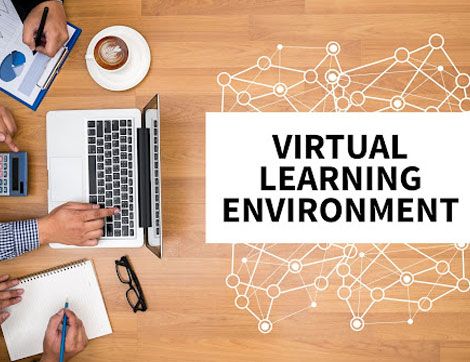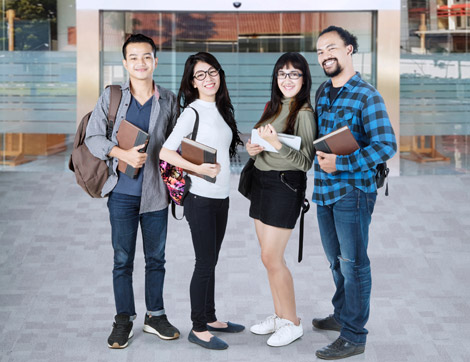As Australia increasingly moves towards a digital economy, it is becoming more and more important for our young people to be equipped with the skills and knowledge to protect themselves and our nation from cyber threats.
That’s why the Australian government is working hard to promote cyber security in our schools, vocational education and training and higher education sectors.
In recent years, we have seen a number of high-profile cyber attacks hit Australian businesses and organisations, including the Australian Bureau of Statistics and Telstra.
These attacks have underscored the importance of cyber security and the need for all Australians, regardless of their age or background, to be aware of how to protect themselves online.
The good news is that there are a number of initiatives already underway to promote cyber security in Australian education and training institutions.
Government funding and initiatives
For example, the Australian Government’s Cyber Security Strategy includes a commitment to provide $3.8 million over four years to support the delivery of cyber security education and awareness programs in schools. The goal of Cyber STEPs is to have advanced cyber security taught to children in grades 7–12. TAFEs, other registered training organisations (RTOs), and universities will all be eligible to participate in the initiative as well.
This funding is being used to develop resources and curriculum materials, as well as deliver training for teachers on how to incorporate cyber security into their classrooms.
A total of $140 million will be invested by the Australian government in Australia’s two Tier 1 high performance computing facilities, the Pawsey Supercomputing Centre in Western Australia and the National Computational Infrastructure in Canberra, to update their infrastructure. They support Australia’s research excellence and government operations, and they enable meaningful research in priority sectors such as agribusiness, genomics, and cyber security to take place.
Australian Federal Police (AFP)
In addition, the Australian Federal Police (AFP) has developed a comprehensive cyber safety program called “ThinkUKnow” ThinkUKnow | Australian Federal Police, which is delivered in primary and secondary schools across the country.
The program aims to educate young people about the dangers of the online world and how to protect themselves from becoming victims of cybercrime.
The AFP also offers a free cyber safety app for parents and carers, which provides advice and resources on how to keep children safe online.
The role of The Australian Industry and Skills Committee
The Australian Industry and Skills Committee consults with a network of Industry Reference Committees composed of members from various industry sectors. Their advice is meant to ensure that training packages match the needs of employers and the current economy, especially Industry 4.0, which has its own IRC. The Digital Transformation IRC is also addressing the industry’s demand for automation, digital skills, big data, cyber security, and supply chain skills.
Other initiatives include
<tr’>National Cyber Awareness Raising
Leveraging Cyber.gov.au and Stay Smart Online, the Australian Cyber Security Centre is raising awareness of the simple steps Australians can take to keep themselves safe online.
Australian Cyber Security Centre
<tr’>Cyber Security Cooperative Research Centres (CRC) Program
The Cyber Security CRC will foster high quality research to solve industry-identified problems through outcome-focused collaborative research partnerships between industry entities and research organisations.
Department of Industry, Innovation and Science
| Initiative | Description | Who’s involved |
| Cyber Security Strategy | The Government committed $230 million under the 2016 Cyber Security Strategy to advance and protect our interests online and secure Australia’s prosperity in a connected world. The Department of Home Affairs has conducted a review of the strategy. An update will be published later in 2018. | Department of Home Affairs |
| Critical Infrastructure Centre | The Centre coordinates the management of the complex and evolving national security risks to Australia’s critical infrastructure, including where those risks arise through cyber connectivity. | Department of Home Affairs |
| Australia’s International Cyber Engagement Strategy | Australia’s International Cyber Engagement Strategy sets an agenda to capture the economic prosperity promised by digital trade, prevent cybercrime, and preserve peace in cyberspace. A key measure is the Cyber Cooperation Program, which will assist countries in the Indo-Pacific to develop their capacity in cyber affairs. | Department of Foreign Affairs and Trade |
| Cyber.gov.au and Stay Smart Online | Cyber.gov.au provides topical, relevant and timely information on how individuals and small businesses can protect themselves from, and reduce the risk of, cyber security threats such as software vulnerabilities, online scams, malicious activities, and risky online behaviours. It also includes advice for big business, infrastructure and government. The Stay Smart Online portal assists with outreach and advice, but will soon be merged into Cyber.gov.au to form a one-stop-shop for cyber reporting, information and tailored advice. | Australian Cyber Security Centre |
| Australian Cyber Security Centre | The Australian Cyber Security Centre (ACSC), which sits within the Australian Signals Directorate, brings together existing cyber security capabilities across Government. This is designed to strengthen engagement and partnership with the private sector and co-locate policy and operational functions to enable a consistent whole-of-government approach to cyber security. | Australian Signals Directorate, Defence Intelligence Organisation, Department of Home Affairs, Australian Federal Police, Australian Criminal Intelligence Commission and Australian Security Intelligence Organisation |
| Joint Cyber Security Centres | These additional centres, established in states and territories, will strengthen Australia’s operational cyber security capabilities and resilience. They provide partners with a broader understanding of the threat environment, facilitate information sharing and enable collaboration on shared cyber challenges. | Australian Cyber Security Centre |
| Academic Centres of Cyber Security Excellence (ACCSE) program | The ACCSE program encourages more students to study cyber security and related courses, and provides. $1.9 million of Cyber Security Strategy funding is available over four years (2016-17 to 2019-20) shared equally between the University of Melbourne and Edith Cowan University to assist with establishment and operation of their ACCSE. | Department of Education and Training |
| Cyber Security Tools and Training package | This package will support the cyber security performance of Australian SMEs, by providing advice on cyber resilience, information security and cyber security maturity. | Department of Industry, Innovation and Science |
| The Cyber Security National Program | AustCyber has assisted with the developing of cyber security qualifications available at TAFE institutions from 2018. | Department of Industry, Innovation and Science |
| Australian Cyber Security Growth Network (AustCyber) | AustCyber is one of the Government’s six Industry Growth Centres, and is working collaboratively across the economy, and with international partners, to grow a vibrant and competitive cyber security sector that enhances Australia’s national security and economic prosperity. | Department of Industry, Innovation and Science |
| AustCyber Sector Competitiveness Plan | AustCyber is working, through strategic actions set out in its Sector Competitiveness Plan, to connect and leverage Australian capability in order to grow Australia’s cyber security sector and provide the foundation for the development of innovative and trusted cyber security solutions. | Australian Cyber Security Growth Network |
| Women in Cyber | The Women in Cyber initiative seeks to address the underrepresentation of women in Australia’s cyber security workforce. Partnering with industry and academia, the Australian Cyber Security Centre runs annual mentoring events, networking and sponsorship opportunities to promote and inspire girls and women to embrace careers in cyber security. | Australian Cyber Security Centre |
| Cyber Security Small Business Program | This Program is an integrated element of the Cyber Security Strategy to improve cyber security for Australia’s small businesses. Provides grants of up to $2100 to co-fund small businesses to have their cyber security tested by CREST ANZ approved service providers. | Department of Industry, Innovation and Science |
So far, the response from schools to these initiatives has been very positive, with many students reporting that they feel more confident and prepared to deal with cyber threats as a result of what they have learned.
However, there is still more work to be done in order to ensure that all Australian students are receiving the cyber security education they need.
In particular, it is essential that we continue to invest in resources and training for instructors and educators so that they can confidently deliver these much needed cyber security training to Australian students.
When it comes to developing the best and most current cyber security learning and assessment resources, we at CAQA collaborate closely with professionals in the field. For more information about our training materials for Cyber Security training courses, visit CAQA Resources or contact us today at info@caqa.com.au.
























